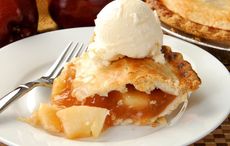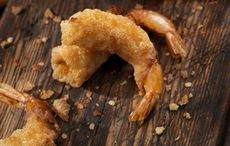The Gilligan family is here in Savannah, Georgia, the home of the world’s second biggest St. Patrick’s Day parade. In fact there is a big sign on River Street that declares that there are only 236 days until the next one!
Savannah’s first St. Patrick’s Day Parade was in 1813, only 80 years after the city was founded by General James Oglethorpe. A small group of Hibernians organized and marched on the streets of Savannah to remember the death of our Patron Saint, Saint Patrick of Ireland. Over the years the city prospered with Irish immigrants due to the potato famine and political persecution their country faced
We are proud to carry on the tradition our ancestors began almost 200 years ago.
In early times, Savannah cooking and Low-Country cooking was virtually synonymous. Both cuisines are dependent on a melting pot of heritage and native ingredients. The dominant staple of cooking was the rice, originally brought over in the 17th Century from East Africa, probably Madagascar, to South Carolina, which became the major U.S. rice growing state until the Civil War. Rice grows best when partly submerged in water, so the tidal flats offered ideal conditions.
Tomatoes, corn and hominy (hulled and dried kernels of corn from which the bran and germ have been removed) were also significant foods, with the latter being served almost daily.
From the West Indies came the compelling influence of hot and spicy foods, including peppers, cayenne, mustard and pepper sherry, a sherry spiced up with Jamaica’s Scotch Bonnet pepper.
amaican planters used to celebrate their prowess in the saddle by throwing lavish diners to decide who would produce the hottest dishes. Jamaican cooks used this hot pepper sherry to add the right touch to soups and stews.
From Africa, by way of the islands, came benne (sesame) seeds, an East Indian herb supposedly bestowed with a charm by which one could secure entrance and exit through any portal. These seeds arrived in America on the necks of African slaves, who wore them for good luck and subsequently planted them near their quarters on the plantations. Cooks in the "big" kitchens knew how to use the aromatic seed to make delicious dishes.
The Africans also brought okra, meat jerky, greens, yams (which are sweet potatoes in America) greens, peanuts, black-eyed peas and corn meal. African cooks worked in the kitchens of the big plantation owners, combining these then-exotic ingredients into luscious, long-simmering stews, crisp and tangy deep fried foods using the spices and herbs they knew so well to turn this cuisine into among Americas finest.
Seafood and game proliferated in this coastal area and became major ingredients in Low Country cooking. Fishing was a major occupation, as was hunting duck, quail, marsh hens and deer. Both pastimes were great sport as well as productive industries.
The plentiful harvest of the sea has been a basis of Low Country dishes since the Indians harvested oysters, clams, shrimp and crabs. No one visiting the coastal areas of Georgia and South Carolina can resist the okra and seafood gumbo, oyster or crab stew, she-crab soup, roasted oysters, jambalaya, deviled crab, catfish, seafood au gratin, fried shrimp or the king of all Low-Country dishes, Low-Country Boil.
LOW-COUNTRY BOIL
Once called Frogmore Stew, this one-pot wonder was created by a National Guardsman when he needed to cook a meal for 100 soldiers. Richard Gay, who learned the recipe from his family, had everyone remembering his stew. The dish was later named Frogmore, where Richard was from, by the guards who teased him about home. The postal service eliminated the name Frogmore, which changed this popular dish to Low-country boil.
This seafood dish is a combination of shrimp, sausage, corn, and potatoes. Great for relaxing trips to the beach, it is also easy to create for a crowd. Low-country boil can be served on newspaper for easy clean up. Crab, onion, and butter are frequent additions to the pot, and having a removable drain basket only makes cooking easier. The rule of thumb here is the bigger the crowd, the bigger the pot.
Ingredients
4 pounds small red potatoes
5 quarts water
4 tablespoons Old Bay seasoning
2 pounds kielbasa or hot smoked link sausage, cut into 1½-inch pieces
6 ears of corn, halved
4 pounds large fresh shrimp, peeled and deveined
Cocktail sauce
Method
Add potatoes to large pot, and then add 5 quarts water and seasonings. Cover pot and heat to a rolling boil; cook 5 minutes. Add sausage and corn, and return to a boil. Cook 10 minutes or until potatoes are tender.
Add shrimp to stockpot; cook 3 to 4 minutes or until shrimp turn pink. Drain. Serve with cocktail sauce. Serves 12
AND FINALLY…
A guy from Georgia passed away and left his entire estate to his beloved widow, but she can't touch it 'til she's 14.
AND THERE’S MORE….
A Georgia State trooper pulls over a pickup on I-95 and says to the driver, "Got any I.D.?" The driver replies "Bout wut?"




Comments